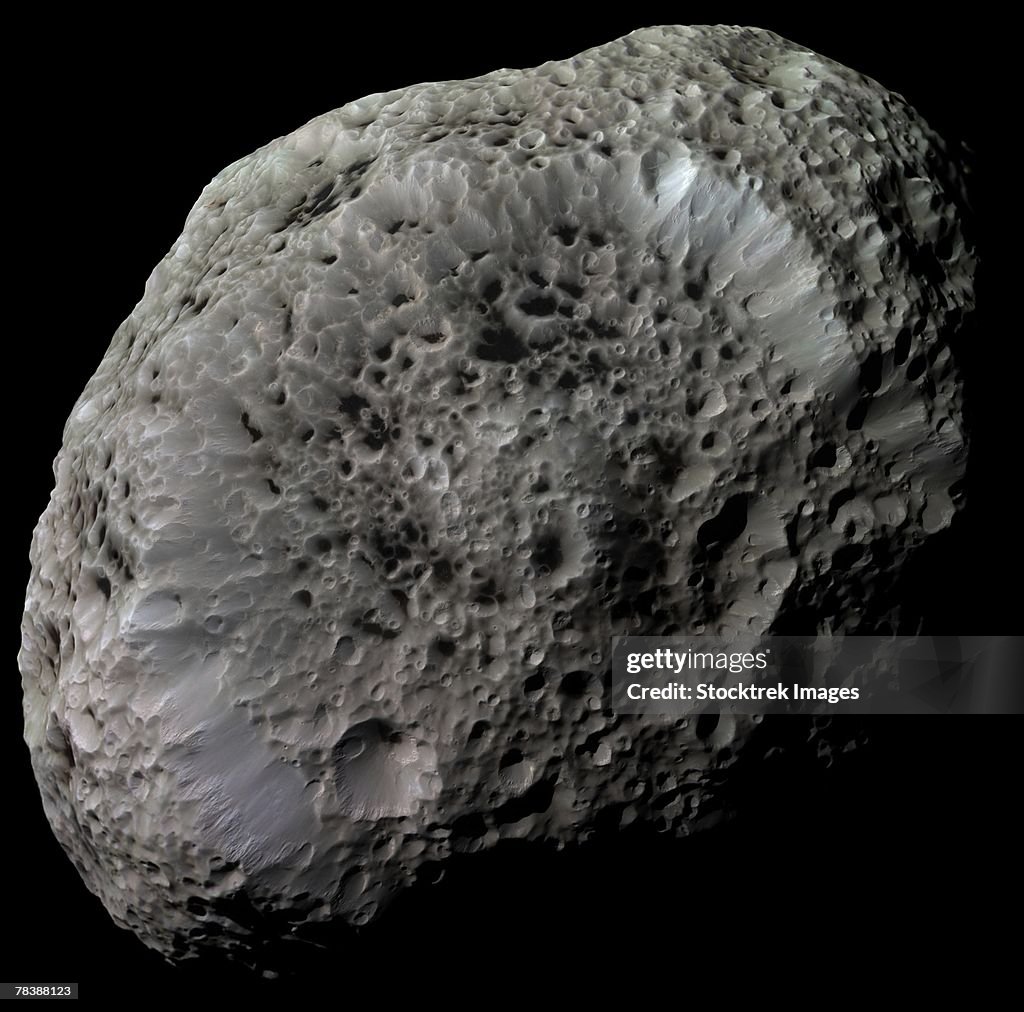Saturn's moon Hyperion - stock photo
This stunning false-color view of Saturn's moon Hyperion reveals crisp details across the strange, tumbling moon's surface. Differences in color could represent differences in the composition of surface materials. The view was obtained during Cassini's very close flyby on September 26, 2005. Hyperion has a notably reddish tint when viewed in natural color. The red color was toned down in this false-color view, and the other hues were enhanced, in order to make more subtle color variations across Hyperion's surface more apparent. Cassini scientists think that Hyperion's unusual appearance can be attributed to the fact that it has an unusually low density for such a large object, giving it weak surface gravity and high porosity. These characteristics help preserve the original shapes of Hyperion's craters by limiting the amount of impact ejecta coating the moon's surface. Impactors tend to make craters by compressing the surface material, rather than blasting it out. Further, Hyperion's weak gravity, and correspondingly low escape velocity, means that what little ejecta is produced has a good chance of escaping the moon altogether.

Get this image in a variety of framing options at Photos.com.
PURCHASE A LICENSE
All Royalty-Free licenses include global use rights, comprehensive protection, simple pricing with volume discounts available
€300.00
EUR
Getty ImagesSaturns Moon Hyperion High-Res Stock Photo Download premium, authentic Saturn's moon Hyperion stock photos from 51łÔąĎÍř Explore similar high-resolution stock photos in our expansive visual catalogue.Product #:78388123
Download premium, authentic Saturn's moon Hyperion stock photos from 51łÔąĎÍř Explore similar high-resolution stock photos in our expansive visual catalogue.Product #:78388123
 Download premium, authentic Saturn's moon Hyperion stock photos from 51łÔąĎÍř Explore similar high-resolution stock photos in our expansive visual catalogue.Product #:78388123
Download premium, authentic Saturn's moon Hyperion stock photos from 51łÔąĎÍř Explore similar high-resolution stock photos in our expansive visual catalogue.Product #:78388123€300€40
Getty Images
In stockDETAILS
Credit:
51łÔąĎÍř #:
78388123
License type:
Collection:
Stocktrek Images
Max file size:
4140 x 4092 px (13.80 x 13.64 in) - 300 dpi - 3 MB
Upload date:
Release info:
No release required
Categories: